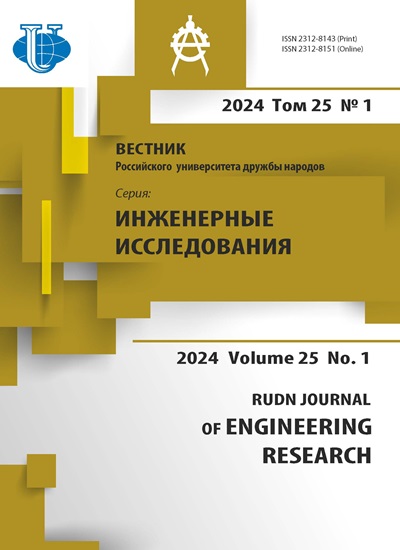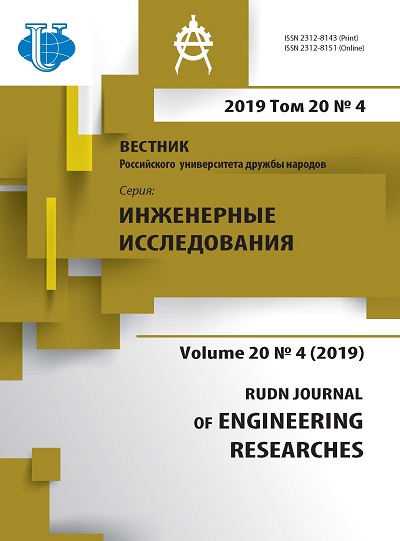On the motion of bodies based on changes in the kinetic moment
- Authors: Razoumny Y.N.1, Kupreev S.A.1
-
Affiliations:
- Peoples’ Friendship University of Russia (RUDN University)
- Issue: Vol 20, No 4 (2019)
- Pages: 267-275
- Section: Aviation and rocket and space technology
- URL: https://journals.rudn.ru/engineering-researches/article/view/23419
- DOI: https://doi.org/10.22363/2312-8143-2019-20-4-267-275
Cite item
Full Text
Abstract
The controlled motion of a body in a central gravitational field without mass flow is considered. The possibility of moving the body in the radial direction from the center of attraction due to changes in the kinetic moment relative to the center of mass of the body is shown. A scheme for moving the body using a system of flywheels located in the same plane in near-circular orbits with different heights is proposed. The use of the spin of elementary particles is considered as flywheels. It is proved that using the spin of elementary particles with a Compton wavelength exceeding the distance to the attracting center is energetically more profitable than using the momentum of these particles to move the body. The calculation of motion using hypothetical particles (gravitons) is presented. A hypothesis has been put forward about the radiation of bodies during accelerated motion, which finds indirect confirmation in stellar dynamics and in an experiment with the fall of two bodies in a vacuum. The results can be used in experiments to search for elementary particles with low energy, explain cosmic phenomena and to develop transport objects on new physical principles.
About the authors
Yury N. Razoumny
Peoples’ Friendship University of Russia (RUDN University)
Author for correspondence.
Email: kupreev-sa@rudn.ru
Director of Department of Mechanics and Mechatronics of Academy of Engineering of RUDN University, Director of Academy of Engineering of RUDN University, Doctor of Sciences (Techn.), Professor, full member of Russian Academy of Cosmonautics, full member of International Academy of Astronautics
6 Miklukho-Maklaya St., Moscow, 117198, Russian FederationSergei A. Kupreev
Peoples’ Friendship University of Russia (RUDN University)
Email: kupreev-sa@rudn.ru
Professor of Department of Mechanics and Mechatronics of Institute of Space Technologies, Deputy Director of Academy of Engineering of RUDN University, Doctor of Sciences (Techn.), Docent
6 Miklukho-Maklaya St., Moscow, 117198, Russian FederationReferences
- Beletskii VV, Levin EM. Dinamika kosmicheskikh trosovykh sistem [Dynamics of space tether systems]. Moscow: Nauka Publ.; 1990.
- Beletskii VV. Ocherki o dvizhenii kosmicheskikh tel [Essays on the motion of space bodies]. Moscow: LKI Publ.; 2009.
- Alpatov AP, Beletskii VV, Dranovskii VI, Zakrzhevskii AE, Pirozhenko AV, Troger G, Khoroshilov VS. Dinamika kosmicheskikh sistem s trosovymi i sharnirnymi soedineniyami [Dynamics of space systems with cable and pivot connection]. Izhevsk: Institut komp'yuternykh issledovanii; 2007.
- Рігоzhenko AV. Two tethered bodies motion control in the gravitational field by the length variation. Cosmic Research. 1990;(4):473–482.
- Shcherbakov VI. Orbital'nye manevry kosmicheskoi trosovoi sistemy [Orbital maneuvers of the space tethered system]. Saint Petersburg: A.F. Mozhaysky Military-Space Academy; 2010.
- Breakwell JV, Gearhart JW. Pumping a Tethered Configuration to Boost its Orbit Around an Oblate Planet. NASA, AIAA, and PSN, International Conference on Tethers in Space, Arlington, VA, Sept. 17–19, 1986.
- Popov AS. Analysis of the capacity to use a repulsive two-mass space system with periodically formed coupling to perform interorbital flights. Aerospace MAI Journal. 2017;24(3):72–77.
- Aslanov VS, Ledkov AS. Dynamics of the Tethered Satellite Systems. Cambridge: Woodhead Publishing Limited; 2012.
- Ivanov VA, Kupreev SA, Ruchinskii VS. Kosmicheskie trosovye sistemy [Space tether systems]: Training manual. Moscow: Al’fa-M Publ.; 2014.
- Ivanov VA, Kupreev SA, Liberzon MR. Sblizhenie v kosmose s ispol'zovaniem trosovykh system [The con-vergence in space with the using of tethered systems]: monograph. Мoscow: Khoruzhevskii Publ.; 2010.
- Isaacs JD, Vine AC, Bradner H, Bachus GE. Satellite elongation into a true “sky-hook”. Science. 1996;151 (3711):682–683. doi: 10.1126/science.151.3711.682.
- Arcutanov JN. V kosmos bez raket: novaja ideja kosmicheskogo starta [Into space without rockets: a new idea for a space launch]. Znanije – Sila [Knowledge is Power]. 1969;(7):25. (In Russ.)
- Pearson J. The Orbital Tower: A Spacecraft Launcher Using the Earth's Rotational Energy. Acta Astronautica. 1975;2(9–10):785–799.
- Murray CD, Dermott SF. Solar System Dynamics. Cambridge University Press; 1999. p. 184.
- Abbott BP, et al. GW170104: Observation of a 50-Solar-Mass Binary Black Hole Coalescence at Redshift 0.2. Physical Review Letters. 2017;118:221101. doi: 10.1103/PhysRevLett.118.221101.
- Prince KC, et al. Coherent control with a short-wavelength free-electron laser. Nature Photonics. 2016; 10:176–179.
- Shawyer R. A Theory of Microwave Propulsion for Spacecraft. Theory paper v. 9.3. New Scientist. 2006. Available from: http://www.emdrive.com/
- NASA Team Claims 'Impossible' Space Engine Works – Get the Facts. National Geographic. 2016, 21 November. Available from: https://news.nationalgeographic.com/ 2016/11/nasa-impossible-emdrive-physics-peer-review-space-science/ (accessed: 21.10.2019).
- Watch a Feather and Bowling Ball Fall at the Same Speed: An experiment with the fall of two different bodies in a vacuum. Available from: https://www.discovermagazine.com/the-sciences/watch-a-feather-and-bowlingball-fall-at-the-same-speed (accessed: 21.10.2019).
















